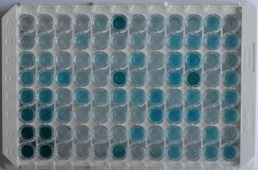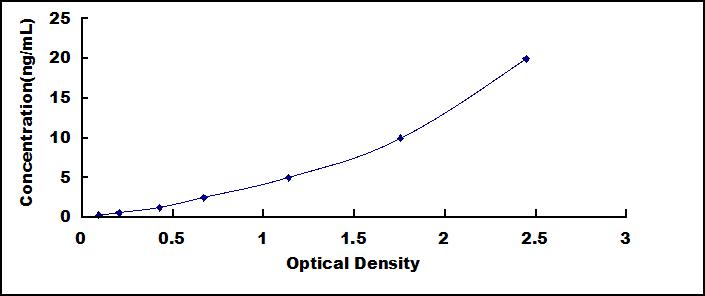Packages (Simulation)

Reagent Preparation

Image (I)
Image (II)
Certificate


ELISA Kit for Alpha-Fetoprotein (AFP)
aFP; A-FP; FETA; HPAFP; Alpha-Fetoglobulin; Alpha-1-fetoprotein
- Product No.SEA153Po
- Organism SpeciesSus scrofa; Porcine (Pig) Same name, Different species.
- Sample Typeserum, plasma, tissue homogenates, cell lysates, cell culture supernates and other biological fluids
- Test MethodDouble-antibody Sandwich
- Assay Length3h
- Detection Range0.312-20ng/mL
- SensitivityThe minimum detectable dose of this kit is typically less than 0.122ng/mL.
- DownloadInstruction Manual
- UOM 48T96T 96T*5 96T*10 96T*100
- FOB
US$ 529
US$ 756
US$ 3402
US$ 6426
US$ 52920
For more details, please contact local distributors!
Specificity
This assay has high sensitivity and excellent specificity for detection of Alpha-Fetoprotein (AFP).
No significant cross-reactivity or interference between Alpha-Fetoprotein (AFP) and analogues was observed.
Recovery
Matrices listed below were spiked with certain level of recombinant Alpha-Fetoprotein (AFP) and the recovery rates were calculated by comparing the measured value to the expected amount of Alpha-Fetoprotein (AFP) in samples.
| Matrix | Recovery range (%) | Average(%) |
| serum(n=5) | 89-101 | 96 |
| EDTA plasma(n=5) | 85-98 | 92 |
| heparin plasma(n=5) | 98-105 | 102 |
Precision
Intra-assay Precision (Precision within an assay): 3 samples with low, middle and high level Alpha-Fetoprotein (AFP) were tested 20 times on one plate, respectively.
Inter-assay Precision (Precision between assays): 3 samples with low, middle and high level Alpha-Fetoprotein (AFP) were tested on 3 different plates, 8 replicates in each plate.
CV(%) = SD/meanX100
Intra-Assay: CV<10%
Inter-Assay: CV<12%
Linearity
The linearity of the kit was assayed by testing samples spiked with appropriate concentration of Alpha-Fetoprotein (AFP) and their serial dilutions. The results were demonstrated by the percentage of calculated concentration to the expected.
| Sample | 1:2 | 1:4 | 1:8 | 1:16 |
| serum(n=5) | 81-89% | 97-105% | 99-105% | 96-103% |
| EDTA plasma(n=5) | 81-94% | 91-101% | 91-98% | 86-99% |
| heparin plasma(n=5) | 93-102% | 93-101% | 92-105% | 78-102% |
Stability
The stability of kit is determined by the loss rate of activity. The loss rate of this kit is less than 5% within the expiration date under appropriate storage condition.
To minimize extra influence on the performance, operation procedures and lab conditions, especially room temperature, air humidity, incubator temperature should be strictly controlled. It is also strongly suggested that the whole assay is performed by the same operator from the beginning to the end.
Reagents and materials provided
| Reagents | Quantity | Reagents | Quantity |
| Pre-coated, ready to use 96-well strip plate | 1 | Plate sealer for 96 wells | 4 |
| Standard | 2 | Standard Diluent | 1×20mL |
| Detection Reagent A | 1×120µL | Assay Diluent A | 1×12mL |
| Detection Reagent B | 1×120µL | Assay Diluent B | 1×12mL |
| TMB Substrate | 1×9mL | Stop Solution | 1×6mL |
| Wash Buffer (30 × concentrate) | 1×20mL | Instruction manual | 1 |
Assay procedure summary
1. Prepare all reagents, samples and standards;
2. Add 100µL standard or sample to each well. Incubate 1 hours at 37°C;
3. Aspirate and add 100µL prepared Detection Reagent A. Incubate 1 hour at 37°C;
4. Aspirate and wash 3 times;
5. Add 100µL prepared Detection Reagent B. Incubate 30 minutes at 37°C;
6. Aspirate and wash 5 times;
7. Add 90µL Substrate Solution. Incubate 10-20 minutes at 37°C;
8. Add 50µL Stop Solution. Read at 450nm immediately.
GIVEAWAYS
INCREMENT SERVICES
-
 Single-component Reagents of Assay Kit
Single-component Reagents of Assay Kit
-
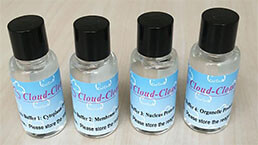 Lysis Buffer Specific for ELISA / CLIA
Lysis Buffer Specific for ELISA / CLIA
-
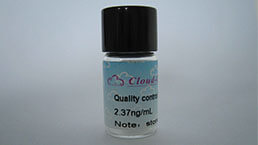 Quality Control of Kit
Quality Control of Kit
-
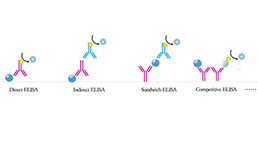 ELISA Kit Customized Service
ELISA Kit Customized Service
-
 Disease Model Customized Service
Disease Model Customized Service
-
 Serums Customized Service
Serums Customized Service
-
 TGFB1 Activation Reagent
TGFB1 Activation Reagent
-
 Real Time PCR Experimental Service
Real Time PCR Experimental Service
-
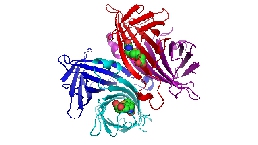 Streptavidin
Streptavidin
-
 Fast blue Protein Stain solution
Fast blue Protein Stain solution
-
 Single-component Reagents of FLIA Kit
Single-component Reagents of FLIA Kit
-
 Streptavidin-Agarose Beads
Streptavidin-Agarose Beads
| Magazine | Citations |
| BioFactors | Ginger ingredients inhibit the development of diethylnitrosoamine induced premalignant phenotype in rat chemical hepatocarcinogenesis model PubMed: 20872761 |
| Food and Nutrition Sciences | Investigation of the Biochemical and Histological Changes Induced by Zearalenone Mycotoxin on Liver in Male Mice and the Protective Role of Crude Venom Extracted from Jellyfish Cassiopea Andromeda. Scirp: 5684 |
| Diabetes Research and Clinical Practice | Polyol profile as an early diagnostic and prognostic marker in natural product chemoprevention of hepatocellular carcinoma in diabetic rats ScienceDirect: S0168822711000520 |
| Life Sciences | Comparison of angiotensin converting enzyme inhibitors and angiotensin II type 1 receptor blockade for the prevention of premalignant changes in the liver ScienceDirect: S0024320511002700 |
| Annals of Hepatology | Cytokines as important playmakers of experimental hepatocarcinogenesis confounded by diabetes. Hepatology: source |
| Biomedicine & Aging Pathology | Chemopreventive and therapeutic efficacy of Salsola inermis extract against N-nitrosodiethylamine-initiated and phenobarbital-promoted hepatocellular carcinogenesis in Wistar rats ScienceDirect: S2210522013000348 |
| European journal of pharmacology | Suramin inhibits hepatic tissue damage in hepatocellular carcinoma through deactivation of heparanase enzyme Pubmed: 24530413 |
| Asian Pac J Cancer Prev. | Association of Paraoxonase-1 (Q192R and L55M) Gene Polymorphisms and Activity with Colorectal Cancer and Effect of Surgical Intervention. Pubmed:25684529 |
| Journal of Analytical Atomic Spectrometry | Detection of HIV-1 p24 antigen using streptavidin–biotin and gold nanoparticles based immunoassay by inductively coupled plasma mass spectrometry Rsc:Source |
| PLOS ONE | Development of a Highly Sensitive Glycan Microarray for Quantifying AFP-L3 for Early Prediction of Hepatitis B Virus–Related Hepatocellular Carcinoma Pubmed:24927126 |
| BMC Med Imaging | Evaluation of 11C-acetate and 18F-FDG PET/CT in mouse multidrug resistance gene-2 deficient mouse model of hepatocellular carcinoma PubMed: 25981587 |
| Tumour Biol | Elevated serum soluble CD14 levels in chronic HBV infection are significantly associated with HBV-related hepatocellular carcinoma PubMed: 26643893 |
| Acta Veterinaria Brno | The concentrations of selected blood serum proteins in calves during the first three months of life 85:33 |
| Hepatobiliary Pancreat Dis Int | Predictive value of tumor markers in patients with recurrent hepatocellular carcinoma in different vascular invasion pattern abstract:abstract4525.shtml |
| Journal of Applied Pharmaceutical Science | Chemopreventive effect of Indigofera linnaei extract against diethylnitrosamine induced hepatocarcinogenesis in rats 2071_pdf.pdf |
| Frontiers in Physiology | Anticarcinogenic potential of ethanol extract of Indigofera cordifolia Roth.(Fabales: Fabaceae) on diethylnitrosamine induced hepatocarcinogenesis in rats v04n07a07a |
| International Journal of Clinical and Experimental Medicine | Effect of Mesenchymal Stem Cells on Transforming Growth Factor Beta Level in Hepatocellular Carcinoma Induced Rat Model 1345-1349 |
| Tumor Biology | Antiangiogenic activity of vitexicarpine in experimentally induced hepatocellular carcinoma: Impact on vascular endothelial growth factor pathway pubmed:28651490 |
| Advances in Clinical and Experimental Medicine | Mesenchymal stem cell therapy of hepatocellular carcinoma in rats: Detection of cell homing and tumor mass by magnetic resonance imaging using iron oxide nanoparticles ISSN 2451-2680 |
| Tumor biology | Evaluation of the antitumor activity of platinum nanoparticles in the treatment of hepatocellular carcinoma induced in rats pubmed:28720064 |
| EBioMedicine | Lnc-PCDH9-13: 1 Is a Hypersensitive and Specific Biomarker for Early Hepatocellular Carcinoma Pubmed:30045829 |
| Sensors and Actuators B: Chemical | One-pot synthesis of a highly selective carboxyl-functionalized superparamagnetic probes for detection of alpha-fetoprotein 10.1016:j.snb.2018.03.038 |
| Biomedicine & Pharmacotherapy | Cytotoxic and partial hepatoprotective activity of sodium ascorbate against hepatocellular carcinoma through inhibition of sulfatase-2 and Pubmed:29669302 |
| Journal of Investigative Surgery | Dynamic Volume Assessment of Hepatocellular Carcinoma in Rat Livers Using a Clinical 3T MRI and Novel Segmentation Pubmed:28107094 |
| Asian Pacific Journal of Cancer Prevention | Impact of Mesenchymal Stem Cells and Vitamin D on Transforming Growth Factor Beta Signaling Pathway in Hepatocellular Carcinoma in Rats Pubmed:29693337 |
| Antioxid Redox Signal | The Association of Peroxiredoxin 4 with the Initiation and Progression of Hepatocellular Carcinoma Pubmed:29687726 |
| Cancer Biology | Chemoprotective Efficacy of Curcumin and Flax Seed Oil in 1, 2-Dimethylhydrazine Induced Rat Colon Cancer |
| Cancer Biology | Ameliorative effects of honey and venom of honey bee on induced colon cancer in male albino rats by1, 2 dimethylhydrazine |
| Biomedicine & Pharmacotherapy | The therapeutic effects of nicotinamide in hepatocellular carcinoma through blocking IGF-1 and effecting the balance between Nrf2 and PKB Pubmed: 30784932 |
| Asian Journal of Pharmacy and Pharmacology | Chemopreventive effects of on diethylnitrosamine induced and Indigofera cassioides phenobarbital promoted rat liver carcinoma |
| American Journal of Transplantation | Circulating exosomal miR‐92b: Its role for cancer immunoediting and clinical value for prediction of posttransplant hepatocellular carcinoma recurrence Pubmed: 31162867 |
| Environ Toxicol Pharmacol. | Targetingp53/TRAIL/caspase-8 signaling by adiponectin reverses thioacetamide-induced hepatocellular carcinoma in rats Pubmed: 31421311 |
| Hepatology Research | Glutamine synthetase promotes tumor invasion in hepatocellular carcinoma through mediating epithelial–mesenchymal transition Pubmed: 31652385 |
| REDOX REPORT | Selective cytotoxic activity and protective effects of sodium ascorbate against hepatocellular carcinoma through its effect on oxidative stress and apoptosis in vivo and … Pubmed: 32172678 |
| Scientific Reports | The possible role of Dickkopf-1, Golgi protein-73 and Midkine as predictors of hepatocarcinogenesis: a review and an Egyptian study Pubmed: 32198440 |
| Nutr Cancer | Fucoidan Ameliorates Hepatocellular Carcinoma Induced in Rats: Effect on miR143 and Inflammation Pubmed: 32718197 |
| Lateral Flow Immunosensor for Ferritin Based on Dual Signal-Amplified Strategy by Rhodium Nanoparticles | |
| Microchemical Journal | Magnetic immunoassay for tumor clinical diagnosis based on rolling circular amplification (RCA) coupled with ICP-MS |
| Identification of Polyphenolic Compounds and Hepatoprotective Activity of Artichoke (Cynara Scolymus L.) Edible Part Extracts in Rats | |
| Anticancer efficacy of β-Sitosterol Loaded Hydroxyapatite-Alginate on Colon Cancer Cell in Vivo | |
| DEVELOPMENT | Blocking estrogen-induced AMH expression is crucial for normal follicle formation 33658225 |
| Cytokine | QNZ alleviated hepatocellular carcinoma by targeting inflammatory pathways in a rat model 34564023 |
| Journal of Gastrointestinal Cancer | In Vivo Study of a Newly Synthesized Chromen-4-One Derivative as an Antitumor Agent Against HCC 34698995 |
| Catalog No. | Related products for research use of Sus scrofa; Porcine (Pig) Organism species | Applications (RESEARCH USE ONLY!) |
| RPA153Po01 | Recombinant Alpha-Fetoprotein (AFP) | Positive Control; Immunogen; SDS-PAGE; WB. |
| RPA153Po02 | Recombinant Alpha-Fetoprotein (AFP) | Positive Control; Immunogen; SDS-PAGE; WB. |
| RPA153Po03 | Recombinant Alpha-Fetoprotein (AFP) | Positive Control; Immunogen; SDS-PAGE; WB. |
| PAA153Po02 | Polyclonal Antibody to Alpha-Fetoprotein (AFP) | WB |
| PAA153Po01 | Polyclonal Antibody to Alpha-Fetoprotein (AFP) | WB; IHC |
| PAA153Po03 | Polyclonal Antibody to Alpha-Fetoprotein (AFP) | IHC |
| LAA153Po81 | FITC-Linked Polyclonal Antibody to Alpha-Fetoprotein (AFP) | WB; IHC; ICC; IF. |
| LAA153Po71 | Biotin-Linked Polyclonal Antibody to Alpha-Fetoprotein (AFP) | IHC |
| SEA153Po | ELISA Kit for Alpha-Fetoprotein (AFP) | Enzyme-linked immunosorbent assay for Antigen Detection. |
| MEA153Po | Mini Samples ELISA Kit for Alpha-Fetoprotein (AFP) | Enzyme-linked immunosorbent assay for Antigen Detection. |
| LMA153Po | Multiplex Assay Kit for Alpha-Fetoprotein (AFP) ,etc. by FLIA (Flow Luminescence Immunoassay) | FLIA Kit for Antigen Detection. |
| KSA153Po01 | ELISA Kit DIY Materials for Alpha-Fetoprotein (AFP) | Main materials for "Do It (ELISA Kit) Yourself". |

